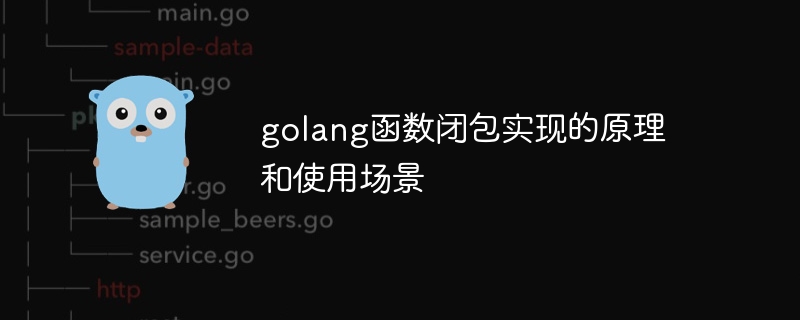
Principle of closure in Go: When an embedded function returns, the embedded function can access the outer function variables, forming a closed environment. Usage scenarios: 1. Maintain state: closures can maintain the state of embedded functions even if the outer function has returned; 2. Delayed execution: used to delay the execution of code; 3. Create callback functions: called through event triggers; 4. Simulate objects : Used as object simulation, the methods are implemented by embedded functions.

Principles of function closures
In Go In , closure is a unique relationship between a function and the variables it defines. When a function nested within a function returns, the nested function can still access the variables of the outer function, even if the outer function has returned. This is because the inline function has closed the environment of the outer function, including variables and constants.
A function closure consists of two parts:
Usage scenarios
Closures have a variety of usage scenarios in Go:
Practical case
The following is a practical case showing how to use closures to maintain state:
func main() {
// 定义外部函数
func getCounter(initial int) func() int {
counter := initial // 捕获外部函数中定义的变量
// 返回一个闭包,它封闭了外部函数的环境
return func() int {
counter++ // 内部函数访问并修改外部函数的变量
return counter
}
}
// 创建一个闭包,初始计数为 0
var counterIncrement = getCounter(0)
// 调用内部函数多次,每次增加计数
for i := 0; i < 5; i++ {
fmt.Println(counterIncrement()) // 打印当前计数
}
}Output:
1 2 3 4 5
The above is the detailed content of The principles and usage scenarios of golang function closure implementation. For more information, please follow other related articles on the PHP Chinese website!
 How to define variables in golang
How to define variables in golang
 What are the data conversion methods in golang?
What are the data conversion methods in golang?
 What are the commonly used libraries in golang?
What are the commonly used libraries in golang?
 What is the difference between golang and python
What is the difference between golang and python
 What is digital currency trading
What is digital currency trading
 How to be invisible online on TikTok
How to be invisible online on TikTok
 matlab colormap function usage
matlab colormap function usage
 Tutorial on making inscribed coins
Tutorial on making inscribed coins
 How to solve the problem of missing ssleay32.dll
How to solve the problem of missing ssleay32.dll




